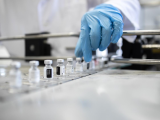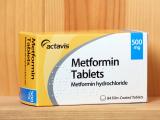US children were prescribed ineffective and potentially harmful drugs to treat COVID-19, such as ivermectin and hydroxychloroquine (HCQ), according to a study published today in Pediatrics. The authors note that while the rates of non-recommended prescribing were very low, because of the large number of pediatric cases, the actual impact is fairly substantial.
During the first weeks of the pandemic, both ivermectin and HCQ were described by clinicians as improving outcomes in patients with severe COVID, but further studies of the medicines showed they did little to improve outcomes.
The Pediatric Infectious Diseases Society, on September 12, 2020, said HCQ should not be used outside of clinical trials, and by February 5, 2021, ivermectin was also no longer recommended by the Infectious Diseases Society of America (IDSA).
"Despite guidelines, use of these medications for acute COVID-19 continued and led to medication shortages," the authors wrote. "By August 2021, ivermectin prescriptions from outpatient retail pharmacies increased 24-fold compared with prepandemic baseline, and ivermectin-related calls to poison control centers increased 5-fold."
Ivermectin most commonly prescribed
This study examined prescriptions for medications not recommended for COVID-19 listed in the IDSA or National Institutes of Health (NIH) treatment guidelines, including HCQ, ivermectin, nitazoxanide, colchicine, and lopinavir-ritonavir.
A total of 2,949,118 pediatric patients were included.
The authors found that, during non-recommended periods, there were 813 HCQ prescriptions, for a rate of 0.03% per COVID-19 diagnosis, and 3,602 ivermectin prescriptions, for a rate of 0.14% per COVID-19 diagnosis. The other medications were not prescribed frequently enough for further analysis.
"Prescribing rates peaked in April 2020 for HCQ and July to August 2021 for ivermectin," the authors said. Prescribing for both medications decreased by early 2022, even through the Omicron uptick in activity.
Oklahoma, Arkansas had highest prescription rates
Southern states had the highest perception rates for nonrecommended drugs, four times the national average. Arkansas had the highest rate of HCQ prescriptions (0.13%; 95% confidence interval [CI], 0.09% to 0.21%), and Oklahoma had the highest rate of ivermectin prescriptions (0.56%; 95% CI, 0.46% to 0.68%).
According to the authors, from July 1 to Aug 31, 2021, the ivermectin prescription rate was 1.6% for the top three states (Oklahoma, Texas, Arkansas) and 1.9% for Oklahoma alone, or 13.6 times the national average.
Among all prescriptions written, pediatricians had the lowest prescribing rates for the non-recommended drugs but the highest diagnosis rate of COVID-19. Family-practice physicians and nurse practitioners prescribed nearly half of all non-recommended drugs.
Although this proportion may seem reassuringly low, the overall incidence of COVID-19 translates into ineffective and potentially harmful prescriptions for many children.
"We found overall rates of HCQ and ivermectin prescriptions during nonrecommended periods of <1%," the authors concluded. "Although this proportion may seem reassuringly low, the overall incidence of COVID-19 translates into ineffective and potentially harmful prescriptions for many children."



















